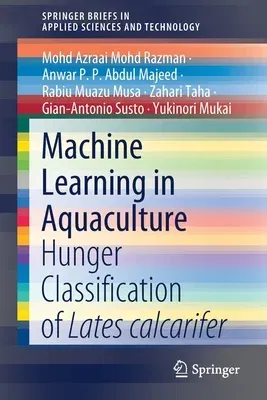Mohd Azraai Mohd Razman
(Author)Machine Learning in Aquaculture: Hunger Classification of Lates Calcarifer (2020)Paperback - 2020, 4 January 2020

Qty
1
Turbo
Ships in 2 - 3 days
In Stock
Free Delivery
Cash on Delivery
15 Days
Free Returns
Secure Checkout

Part of Series
Springerbriefs in Applied Sciences and Technology
Print Length
60 pages
Language
English
Publisher
Springer
Date Published
4 Jan 2020
ISBN-10
9811522367
ISBN-13
9789811522369
Description
Product Details
Authors:
Book Edition:
2020
Book Format:
Paperback
Country of Origin:
NL
Date Published:
4 January 2020
Dimensions:
23.39 x
15.6 x
0.36 cm
ISBN-10:
9811522367
ISBN-13:
9789811522369
Language:
English
Location:
Singapore
Pages:
60
Publisher:
Weight:
108.86 gm